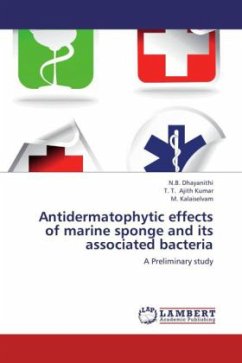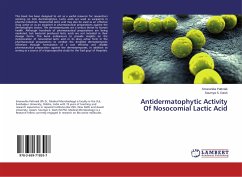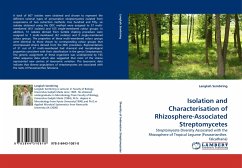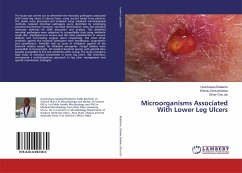Dermatophytic infections of humans and animals are recognized as a major health problem in many parts of the world. They are transmitted by direct contact with infected host or by direct or indirect contact with infected exfoliated skin or hair in clothing, combs, hair brushes, theatre seats, caps, furniture, bed linens, towels, hotel rugs, and locker room floors. The drugs used against dermatophytosis exhibit several side effects and have limited efficacy. So that there is a distinct need for the discovery of new safer and more effective antifungal agents. Marine sponges are a rich source of structurally unique natural compounds, several of which have shown a wide variety of biological activities. In this view the study was carried out to understand the potential effects of marine sponge Sigmadocia carnosa and its associated bacterial extracts against the dermatophytic fungi.
Bitte wählen Sie Ihr Anliegen aus.
Rechnungen
Retourenschein anfordern
Bestellstatus
Storno








